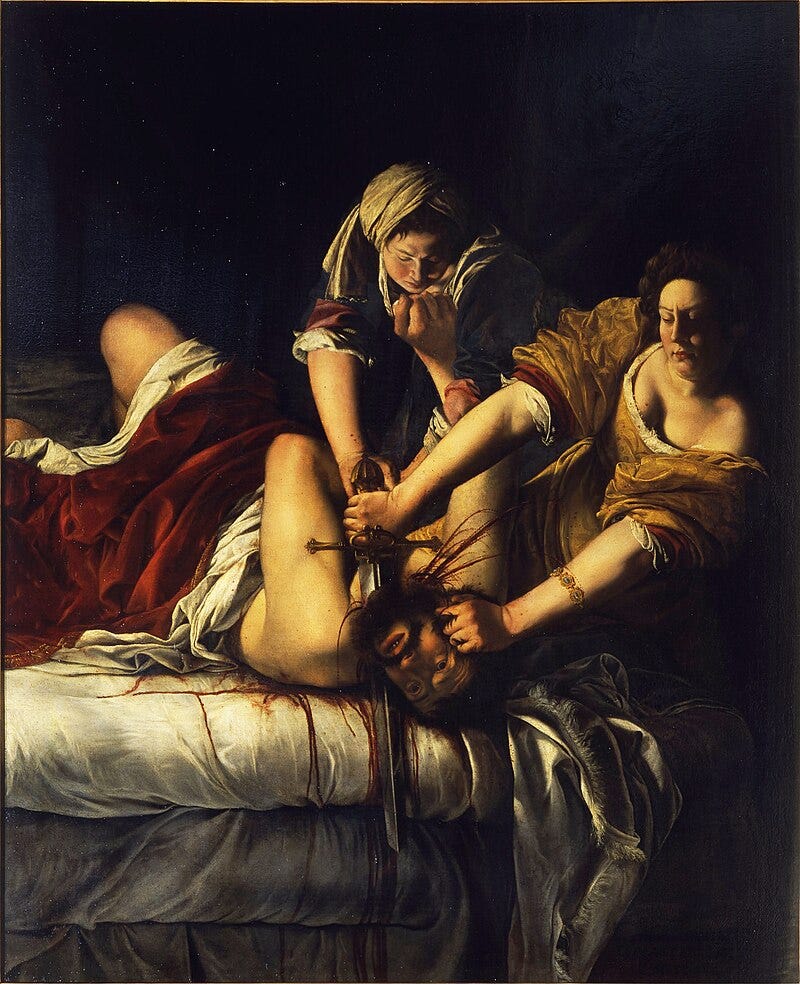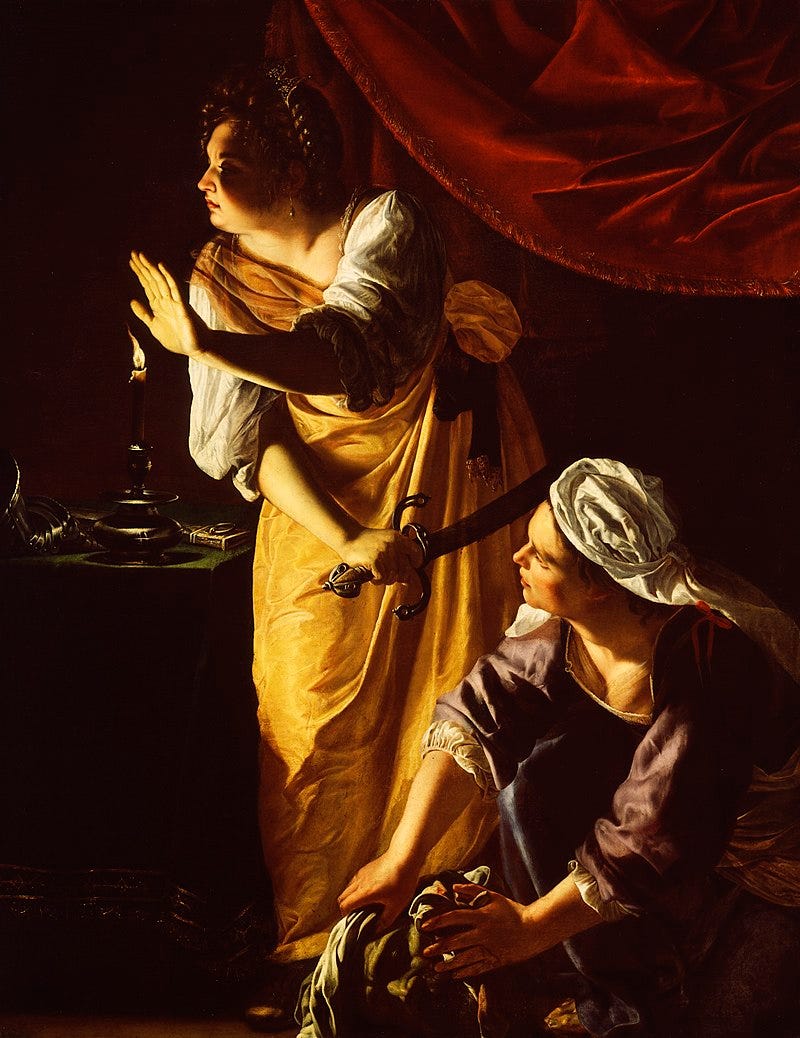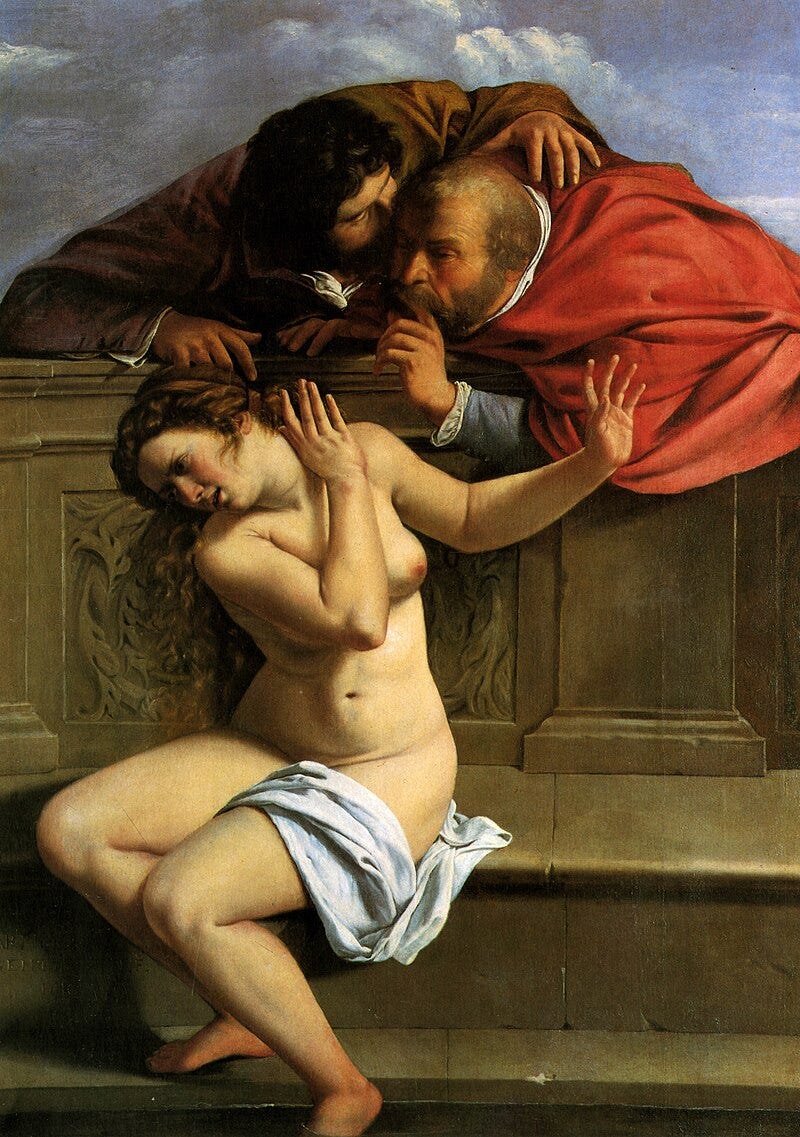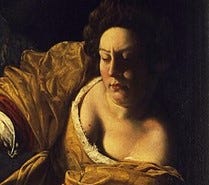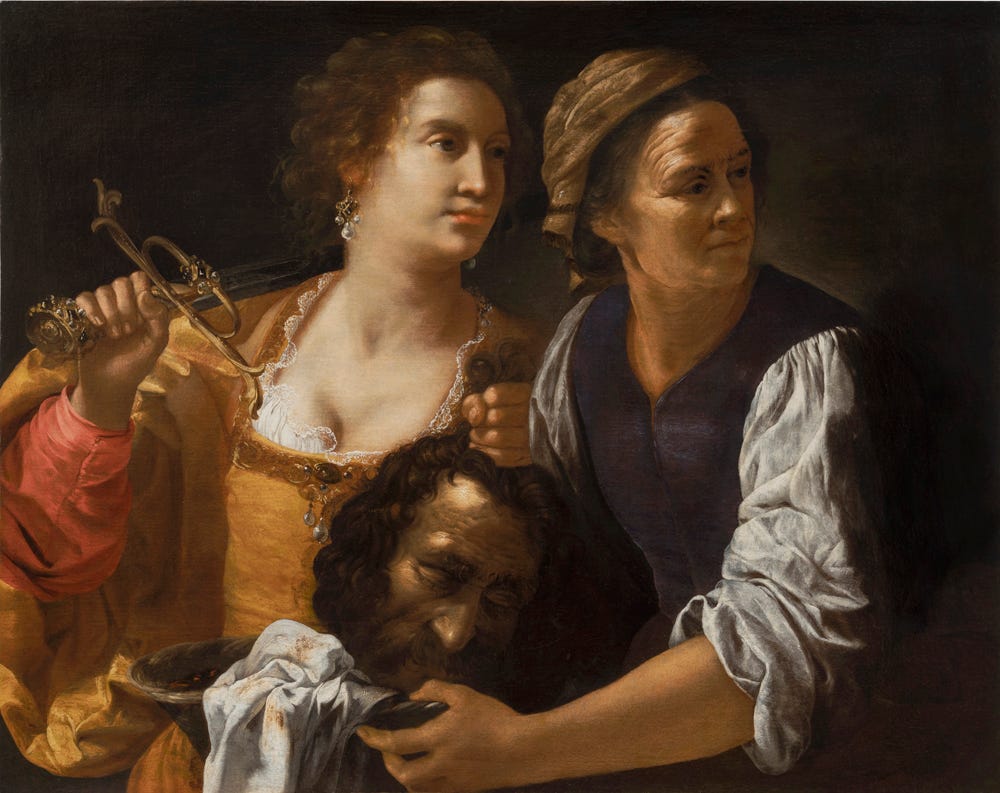Artemisia Gentileschi: Resilience and Rising Above Adversity
Violence and abuse impact far more lives than we often acknowledge.
Unfortunately, these acts are often perpetrated by those we trust most: family members and partners who are supposed to offer love and support.
It’s heartbreaking to consider the countless men and women who live through this trauma, and my heart goes out to each of them. What is particularly tragic is that survival stories often remain untold, fading into the background of our collective history.
Today, I want to shine a light on one remarkable artist who transformed her pain into powerful art. Artemisia Gentileschi (1593-1653) faced what is perhaps the most violating and horrific event a woman could ever experience, yet she channeled her anger and resilience into masterpieces that continue to be applauded and resonate with many of us today.
Self-portrait as a lute player, Artemisia Gentileschi (1615-1617)
Trials and Triumphs
Tragically, at the age of 17, Gentileschi was raped by a family friend, Agostino Tassi. Following the incident, she made the (very brave and difficult) decision to pursue a public trial against her attacker. This was groundbreaking for her time. The trial was harrowing, filled with invasive questioning, but it ultimately highlighted her strength and determination.
The trial opened in Rome in 1612, attracting much public attention. Both parties presented their cases in a court that was known for being hostile to female plaintiffs. During a brutal cross-examination session, Gentileschi faced intense and humiliating questioning as her character was closely scrutinized, and the defense aimed to undermine her credibility. Gentileschi was even subjected to a "torture test" to verify the veracity of her testimony. This brutal procedure involved her being suspended by her arms, in an effort to extract the truth about her claims. The court eventually found Tassi guilty of the charges against him in later that same year. He was sentenced to exile, but he, ironically, continued to live in Rome with no consequence, reflecting the leniency of the punishment.
Following the trial, Gentileschi transformed her trauma into art, using her personal experiences as inspiration. She chose to portray strong female figures in scenes centered around justice, often painting her own likeness as the main female character. Perhaps this was her way of asserting her agency in a 17th century male-dominated world. Gentileschi’s self-representations became poignant commentaries on the female experience, solidifying her legacy as a female artist who defied the societal norms of her time.
Agency and Justice
Most of Gentileschi's works showcase brave women who defy societal constraints and seek to remedy injustice. Her female characters, often inspired by biblical or historical figures, are not passive; they are portrayed with strength and agency.
Gentileschi's most celebrated work, Judith Slaying Holofernes, captures a pivotal moment in the biblical tale of Judith. In this gripping story, Judith, disguised and clever, enters the camp of the Assyrian invader and general Holofernes, and gains his trust during a lavish banquet. As he succumbs to drunkenness, Judith seizes her chance, and proceeds to swiftly behead him. This audacious act saves her city and inspires her people to rise against their oppressors. From this story, Judith emerges as a powerful symbol of feminine courage and cunning, embodying strength typically associated with male heroes.
Judith Slaying Holofernes, Artemisia Gentileschi (1620)
Choosing to paint Judith at the moment of Holofernes’ beheading is a powerful statement. This striking imagery defies traditional portrayals of women as passive victims, highlighting instead that women possess the agency to reshape their own narratives. This portrayal is particularly striking given the context of Gentileschi's own experiences with violence and injustice.
The theme of taking justice into one’s own hands in response to personal or societal wrongs is vividly depicted in this scene. Much like Judith, Gentileschi sought a calculated way to confront her attacker, symbolizing victory over oppression and the reclamation of agency. This focus on vengeance mirrors Gentileschi’s own fight for justice after her assault. Her portrayal of women avenging themselves against their oppressors resonates deeply, offering a powerful visual representation of the desire for justice that many women feel yet often struggle to achieve within societal constraints.
Judith and Her Maidservant with the Head of Holofernes, Artemisia Gentileschi (1623-1625)
Truth and Resilience
Similarly, another one of Gentileschi’s main works, Susanna and the Elders, captures the struggle of a woman facing harassment and betrayal. In this biblical story, Susanna—a beautiful and virtuous woman—becomes the target of two lustful and much older men who seek to blackmail her after she rebuffs their advances. When she stands firm, they retaliate by falsely accusing her of infidelity, leading to her trial. In her moment of desperation, Susanna prays for justice. It is during this moment that the prophet Daniel enters the story, and questions the elders separately to reveal their lies. Ultimately, Susanna’s innocence shines through, and the elders face punishment, highlighting the triumph of truth and righteousness over deceit.
Susanna and the Elders, Artemisia Gentileschi (1610)
Gentileschi’s portrayal of Susanna shows the protagonist as both vulnerable and defiant, caught between her dignity and the threats posed by the older men. Here, Susanna embodies quiet strength and resilience. This theme of resilience is a recurring motif in Gentileschi’s work. By depicting her subjects as strong and resourceful, Gentileschi highlights the inner strength that all women possess, even in contexts where they are victimized. For me, each of Gentileschi’s masterfully crafted scenes are a testament to the ability of women to survive and persevere, no matter the challenges presented before them.
Mastering the Craft
While Gentileschi is celebrated for her empowering compositions, she was also known as a true master of her craft. Her technical prowess rivaled that of renowned contemporaries like Caravaggio.
The emotional intensity of each scene in Gentileschi's work is heightened by her masterful use of color and the Baroque technique of chiaroscuro, famously popularized by Baroque painters. This technique uses strong contrasts between light and shadow to create a sense of volume and depth, which amplifies the drama and tension of the depictions.
For instance, in Judith Slaying Holofernes, Gentileschi uses chiaroscuro to create stark contrasts between light and shadow, and draw our eye to Judith and Holofernes’ expressions. The illumination on Judith's face and body highlights her determination and strength, while the shadows surrounding Holofernes create a sense of vulnerability. This technique not only enhances the three-dimensionality of the figures but also symbolizes the battle between light and darkness, virtue and vice. By employing chiaroscuro, Gentileschi effectively intensifies the narrative, making the moment of triumph and violence both striking and compelling. This intensity invites us to engage with the respective struggles of the subjects, fostering a deeper connection with the scene.
Extracts of Judith Slaying Holofernes, Artemisia Gentileschi (1620)
We Are All Strong
By depicting women as strong, empowered figures, Gentileschi challenges the typical representations of 17th-century art that often highlighted subservience and vulnerability. The themes of agency, justice, and resilience in Gentileschi’s art resonate deeply with her own life experiences and struggles.
Infused with authenticity and the spirit of a survivor, her beautifully crafted scenes and strong female characters symbolize resilience, showcasing the potential for all women to reclaim their narratives, overcome challenges, and assert their identities. This message of empowerment transcends the individual stories portrayed in her work, offering a broader commentary on the strength and capabilities of women in all eras.
Judith and her Maidservant with the Head of Holofernes, Artemisia Gentileschi (1639-1640)



